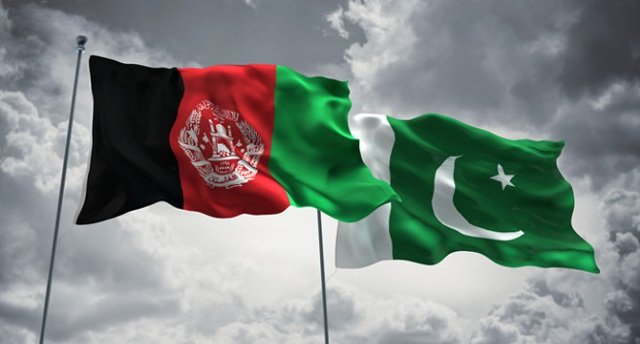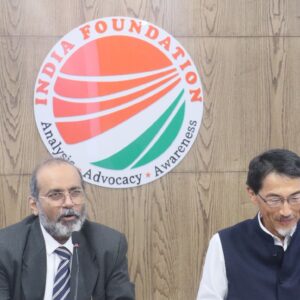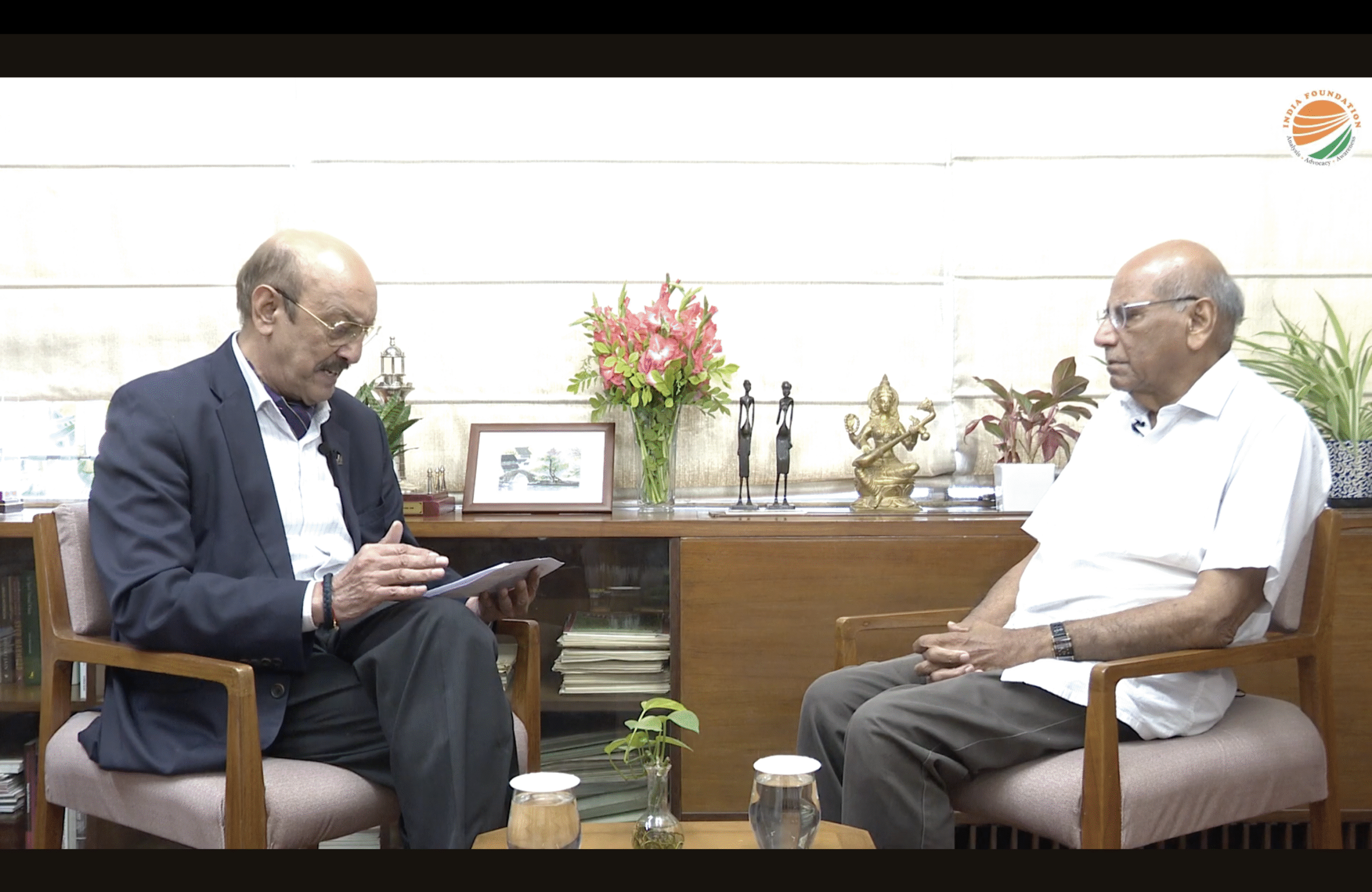There is a certain strangeness about events in the West. For the first time in decades, Afghanistan is marginally more stable than Pakistan. Its economic indicators are also on the rise, unlike Pakistan’s, which is precarious. These are relative figures; indeed, Pakistan has the bare bones of governance and functionality while Kabul is still building up. But the downward spiral of Pakistan in multiple areas, like economic strength, social and political stability and violence, is remarkable by any standards. In contrast, Afghanistan’s upward graph of stability continues despite the worst predictions. This article reviews the trajectories of both countries in the most critical sectors of governance to formulate policy towards both.
Indicator 1: Violence tells its tale
A comparison of United Nations reports indicates a steady decline in armed clashes in Afghanistan, with a spike in recent months[1] due to the ban on poppy cultivation. That is a second aspect of stability. There is no doubt that Afghanistan has cracked down on poppy and ephedra cultivation, with the latter being the favoured ingredient for the production of methamphetamine, according to experts[2]. While the end effect of this on the narcotics market is yet to be seen, the intentions of the Taliban are clear, and the unevenness of such clearance operations is an indicator of their governance capabilities.
Meanwhile, the Taliban clashes with the elusive Islamic State of Khorasan (ISK), with the United Nations report noting over 100 attacks against the group in 2022-2023. These attacks undermine attempts to ensure security and prevent foreign investments, particularly from China. Last year, a leaked memo from a Taliban commander noted that some 7000 ISK cadres[3] were being trained close to the Durand Line, probably in Nangarhar. Just in September, eight Afghan soldiers were killed and several injured in cross-border firing from Pakistani forces in the Khurram area, just opposite Nangarhar. These incidents in the central sector have been climbing, leading to tensions.
According to research, Pakistan’s violent incidents saw a record six-year high in 2023, with a 56 per cent increase in violence[4]. Data for 2024 shows that areas bordering Afghanistan, like Khyber Pakhtunkhwa and Balochistan, totalled some 92 per cent of fatalities, significantly showing incidents not just of terrorism and violence due to security forces operations[5]. As for narcotics, in September last year, there was a significant drug clearance operation in the Qila Abdullah district of Balochistan, which claimed to have destroyed hundreds of labs and crop acreages.[6]
Reports on this are few, but what is apparent on the ground is that the thousands of tons of ephedrine and heroin seized in India originate from Pakistan. In this, the Haji Salim network based in Karachi has been identified, which operates across India, Sri Lanka and Maldives, among others[7]. No operation against any mafia network has been launched. Meanwhile, Pakistan is facing significant drug abuse among its youth, with reports noting around 6.7 million Pakistanis are addicted to ‘controlled drugs’, cannabis identified as the most used drug for some four million users, and an estimated 860,000 and 320,000 regular heroin and opium users, respectively. The fact that most of these drug cultivation areas are in Balochistan and Khyber Pakhtunkhwa makes for a toxic combination in terms of rising violence in the country.
Indicator 2: Unity and Integrity
A second aspect of Afghanistan is the Taliban’s attempt to integrate its poorly governed outlying areas. UNAMA reports regularly note that the Taliban are engaged in a program of outreach to distant provinces and redrawing district boundaries in a bid to elicit support from local communities. There have also been efforts to develop madrassa education professionally to recruit for civil administration from these institutions. While there is no doubt that overall freedoms are highly restricted especially for women, and there are still strong inter-tribal frictions, there are precise but tenuous efforts at normalcy, even while the opposite trend is apparent in Pakistan.
Instead of an outreach, Islamabad is worsening matters by proscribing the entirely peaceful Pashtun Tahaffuz Movement (PTM) led by Manzoor Pashteen. The original Mehsud Tahafuz Movement (MTM) has been demanding since 2013[8] the demining of the Mehsud territory, impartial investigations and trials of those involved in the enforced disappearances of the tribe’s men, the ending of humiliating practices against locals at security checkpoints, extortions, and targeted killings (whether by the Taliban or during military operations), and the provision of fair compensation for properties damaged as a result of the conflict. With at least seven military operations taking place in these areas since 2001, the Pashtuns have had much to bear, including the backlash of three iterations of Pakistani interference, including mujahideen, the Taliban, and now a Tehrik-e-Taliban Pakistan (TTP) that has turned against it. In September 2024, there was the spectacle of Lakki Marwat police staging a protest[9], blocking the Peshawar Karachi Indus Highway for 72 hours, after repeated targeting of policemen. Their demand was simple. The army should withdraw from the area and give powers back to the police. In short, they knew how to deal with the militants, and the army was more of a hindrance. At least 75 policemen have been killed in ambushes and target killings in Khyber Pakhtunkhwa in 2024, according to police data[10].
Then, there is the Baloch question. Pakistan’s policy of ‘forced disappearances’ has become part of the policy, with no precise figures available, except for almost daily reports of one or another young person abducted. The strength of Baloch resistance was apparent in the spate of attacks in August when the Baloch Liberation Army (BLA) launched “Operation Herof.” The BLA attacked some 22 buses, claimed to have captured a military camp for some 20 hours or longer, dominated critical parts of the coastal highway as well as major roads, and blew up the main railway line to Quetta and the rail link to Iran. The group claimed that some 800 fighters and Fedayeen squads had participated in the operations. This was a virtual war against years of oppression, given the breadth and ferocity of the attack. But the establishment promptly made things worse. It barred the charismatic and entirely peaceful activist Mehrang Baloch from attending an event organised by Time magazine,[11] further alienating the people. She addressed it virtually anyway, which meant that Islamabad gained nothing.
The end result is two. The first is the Pashtun jirga, which demanded the removal of the army (and the TTP) and sought free movement of vehicles across the Durand line, reduced electricity costs and the ending of extortion, all to be done within 60 days[12]. If these demands were not met, another jirga would be held. The second issue is that the two hugely divergent movements, Pashtun and Baloch, seem to have come together against the Pakistani state. That is dangerous for Pakistan and is the one trend to watch.
Indicator 3: State of the Economy
Pakistan’s economy has little excuse for its repeated dependencies on foreign assistance. Afghanistan in the 1970s was still poorly developed, though with islands of prosperity like the ‘bread basket’ that was Herat, Kunduz, a hub of the cotton industry, and a famous exporter of dried fruits and carpets, with the country as a whole at peace with itself and the world, and self-sufficient in food. Since then, it has been at war, and despite that, it has managed to improve its economy in 2002, and then again as some fragile peace returns. The World Bank reports an increased supply of goods and services in the market, and the Afghani averaged 79.0 to the US dollar in July 2024, when the Pakistani rupee was about 250 in the same period. Afghan revenue collection increased by 11 %, exceeding the target by 3%. All this is despite the steep decline in humanitarian aid, falling from USD 3.8 billion in 2022 to USD 1.9 billion in 2023. Further declines are likely as the UN Office for the Coordination of Humanitarian Affairs stated that it has received just USD 649 million—21 per cent of the USD 3 billion required to meet the enormous humanitarian need[13].
Pakistan has been facing a ‘drip’ aid arrangement since the 1950s when it began borrowing from the International Monetary Fund. Deputy Finance Minister Ali Pervaiz Malik disclosed that Pakistan will have to repay a startling USD 100 billion external debt in four years, which would primarily be funded by securing rollovers from bilateral lenders. The federal government’s USD 100 billion external debt repayments are 10 times more than the current USD 9.4 billion gross official foreign exchange reserves. According to the Finance Minister, as told to the National Assembly Standing Committee on Finance, the IMF has identified a USD 5 billion financing gap for the 2024 to 2026 period.[14] Notably, major benefactors like China have begun to pull back on financial commitments, with the Chinese Ambassador pointing out that despite investing USD 5.5 billion in the power sector[15] and improving power output significantly, Pakistan had delayed payment of USD 1 billion. China, Saudi Arabia and the UAE have agreed to roll over a USD 12 billion debt for one year to facilitate IMF bail-out packages. Again, it seems that while Afghanistan is grappling with near starvation in some parts of the country, it is on an upward graph and retains its sovereignty. At the same time, Pakistan’s economic troubles have landed it in a trap where it is torn between major donors.
Indicator 4: Relationship with Neighbours and the World
Afghanistan has been making definite strides towards greater acceptability. Its representatives have been travelling to Qatar, Iran and China, among other states, to participate in regional conferences. In addition, several other countries, including India, Britain and Norway, have closed embassies staffed by the previous incumbents. Around a dozen countries operate embassies in Kabul, some like India, at a limited strength. The Chinese and the Russian embassies are among the embassies operating at full strength. The former is far more active, as apparent from its embassy’s activities. In recent days, China has pursued a far more independent line on Afghanistan, with its Ambassador’s disapproval of Pakistan’s pushing back thousands of refugees from Pakistan. Beijing’s engagement with the Taliban is far more than it has had with the Karzai government and indeed predates its government formation, with engagements since 2015. It was also the first country to accept a Taliban Ambassador and appoint its own.
A report notes that bilateral trade more than doubled between 2022 and 2023 from USD 595 million to USD 1.33 billion. Still, few new noteworthy investments have been reported besides the Amu Dariya oil basin deal. Tangible engagement under China’s Belt and Road Initiative has yet to materialise[16]. Russia is also standing firmly by Afghanistan, with both cooperating to deal with the Islamic State. Recently, it has proposed to remove the Taliban from the list of sanctioned entities[17]. That is vitally important to Kabul. More critically, the Taliban have no real quarrels with their other neighbours (barring Pakistan) and are attempting to cooperate with them in reining in terrorism.
The contrast with Pakistan in this regard couldn’t be sharper. As of July 2024, Pakistan’s passport is ranked 102nd in the world by the Henley Passport Index[18]. True, Afghanistan is even lower at 104, but consider their relative histories. Also, Pakistan has troubles with all its neighbours. Iran fired missiles on Pakistan in January 2024 after years of asking Islamabad to rein in terror groups. Afghanistan now has a live border with Pakistan, and India has seen a rise in cross-border terrorism into Jammu in recent months. China, though not a neighbour, has been struggling with attacks against its citizens inside Pakistan.
Conclusion
For India, the sum of it is this. There is no indication that these two countries’ trajectories will change in the foreseeable future. Afghanistan may falter as it goes along, but major neighbours like China and Russia are backing it in many ways that will make Kabul accountable to them. India has recently chosen to take a back seat in Afghanistan, which will mean losing out in a country that is on a rising trajectory. It should restart what it does best, namely, by giving small and effective aid packages. India announced Rs 200 crore in this year’s budget, among the lowest allocations. Consulates need to reopen, and the embassy should be made more functional, contingent on the security the Taliban is willing to provide. It certainly has the capability.
Pakistan, in its present trajectory of violence and insecurity, will continue to hit out in all directions. Still, there are some indicators that its major allies, like Saudi Arabia and China, do not want tensions between India and Pakistan to rise. The Saudis are impatient with the perennial instability in Pakistan, and China would prefer if it can get some returns from its massive investments in the country. For that, Pakistan must move spending towards infrastructure and development in places like Gwadar, where lack of finances is stalling multiple projects. Besides, Islamic extremism is not something China is comfortable with. However, the continuing spike in Pakistan-sponsored terror in J&K does not show that Islamabad wants to dial down tensions.
Yet, taken in entirety, quiet back-door talks with Pakistan could be considered. For India, the priority in national security is a stable western border, where troops can be reorientated towards a far more dangerous east, even should tensions with China be reduced. The quid pro quo for Pakistan is trade, exploiting its geo-strategic location. Trade with Russia and Central Asia is also a priority for Delhi, though not a top one. Recently, Pakistan accepted President Putin’s invitation to join the International North-South Trade Corridor (INSTC), the shortest route to get that trade going. This, in turn, has to be melded with the IMEC (India, Middle East Europe Corridor), which will be an attractive option for Indian consignments. Getting to that stage will take a while.
Meanwhile, given the profound implications for all concerned, it would be ideal for all three countries to engage in strong counter-narcotics cooperation. That in itself can be a test of Pakistan’s sincerity. Cooperation on climate change and water management would benefit both. In the long term, tying Pakistan to a web of trade and transit could create leverage that would motivate Pakistan to abjure terrorism as an instrument of its foreign policy. Quelling a dangerous neighbourhood is in the interests of India and Afghanistan. Pakistan must choose its future trajectory for itself: terror or trade.
Author Brief Bio: Tara Kartha is Director (R&A), CLAWS.
References:
[1] United Nations Assistance Mission in Afghanistan, report to the Secretary General, June 2024 https://unama.unmissions.org/sites/default/files/sg_report_june_2024.pdf
[2] https://www.alcis.org/post/meth-production
[3] Malaiz Daud, Associate Researcher, “ Strange Bedfellows, soon to be estranged? “ Barcelona Centre for International Affairs, 01/2023.
[4] Centre for Research and Security Studies, Annual Report 2023, https://crss.pk/pakistans-violence-related-fatalities-mark-a-record-6-year-high-56-surge-in-violence-recorded-in-2023-crss-annual-security-report/
[5] CRSS Security report, 1st Quarter, https://crss.pk/balochistan-and-kp-dominate-violence-landscape-in-pakistans-q1-2024-crss-security
[6] “High stakes anti-narcotics operation” Hum English , Sept 10, 2023. https://humenglish.com/pakistan/high-stakes-anti-narcotics-operation-in-qila-abdullah/
[7] Tara Kartha, “As UN report warns of rising terrorism in Afghanistan, narcotics activity is picking up in Pakistan”, First Post, ( New Delhi) July 31, 2023.
[8] Qamar Jafri “ The Pashtun Protection Movement in Pakistan”, ICNC SPECIAL REPORT SERIES | VOL. 8 SEPTEMBER 2021 , https://www.nonviolent-conflict.org/wp-content/uploads/2021/09/The-Pashtun-Protection-Movement-PTM-in-Pakistan.pdf
[9] “Police protests continue in Lakki Marwat as Bajaur cops boycott polio duty over militant attacks”, Arab News, September 11, 2024. https://www.arabnews.com/node/2570917/pakistan
[10] Ibid.
[11] Yasmeen Serhad “ Pakistan Bars Activist From Traveling to TIME Event Honoring Her’, October 8, 2024
[12] “Pashtuns Khyber Jirga Concluded With Key Decisions”, Tolo News, 14 October, 2024.
[13] UN Press Release, 9663RD MEETING (AM)SC/15740, 21 June 2024
[14] Shahbaz Rana, “$100b debt repayment looms in four years”, Express Tribune, Sept 20, 2024.
[15] Muhammad Ali, “Capacity tariff of Chinese IPP’s “, Business Recorder , 6 September 2024.
[16] Sarah Godek “ China’s Cautious Quest to draw Afghanistan back into the fold”. 9Dashline, 23 August 2024.
[17] “Russia has decided ‘at highest level’ to remove Taliban from terrorist list” TASS reports in Reuters, October 4, 2024.
[18] Henley & Partners, Global Passport Index 2024.




